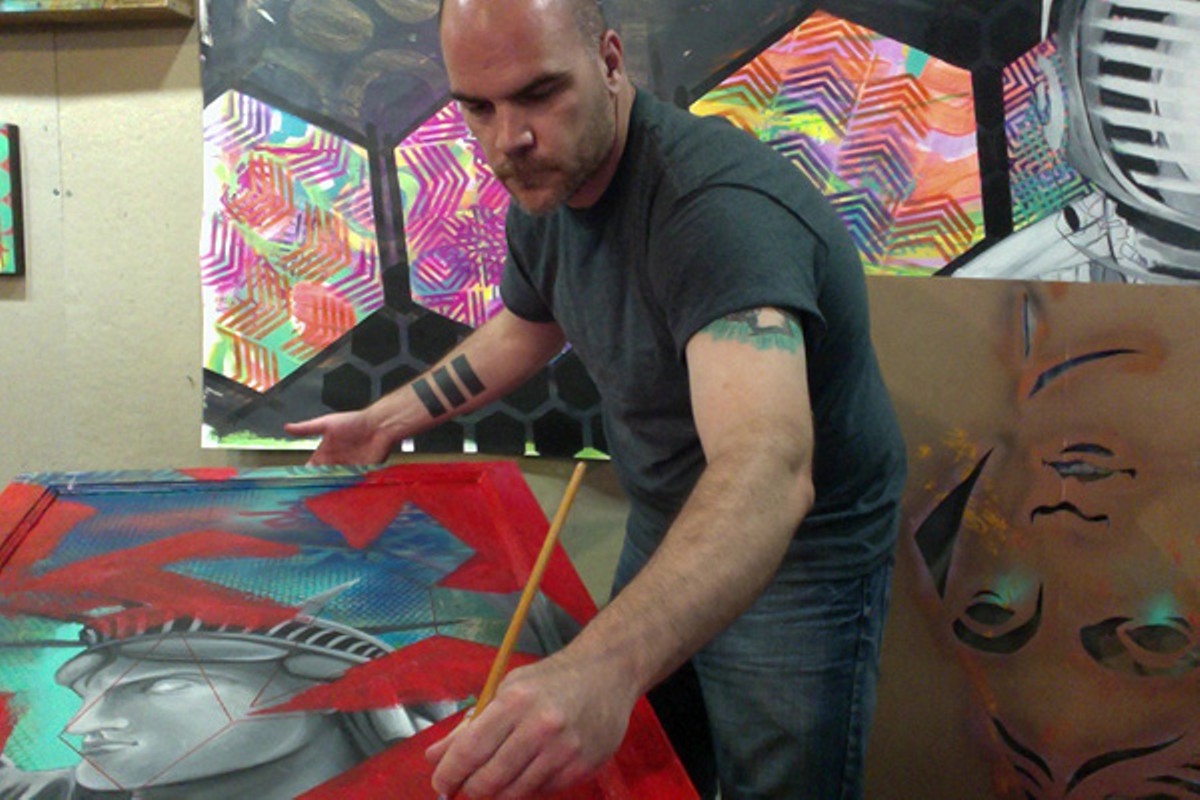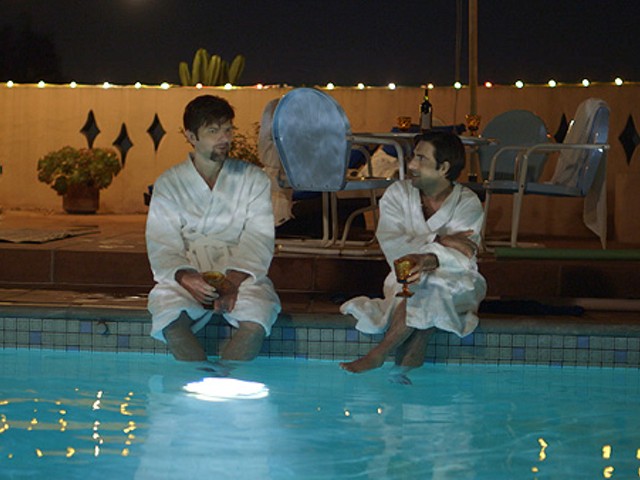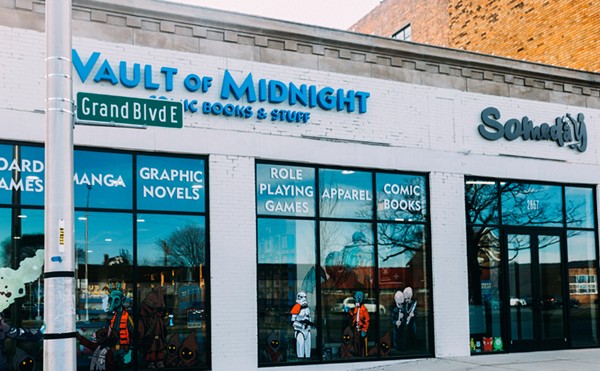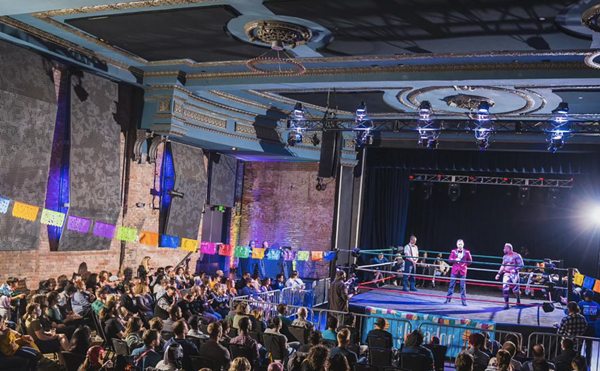We first met Paolo Pedini as he prepped for a group show at the Red Bull House of Art last year, with a unique series of paintings that took ancient Greek subject matter juxtaposed against neon colored backgrounds. The mix of high art and low art, new and old, and representational and non-representational techniques resulted in a standout visual style that stuck with us. As Pedini gears up for a new solo show at the Heidelberg Project's Post-Hab gallery, we checked in by phone to learn more about his art.
Metro Times: I remember in your Red Bull House of Art show, you created your own kind of visual language where you were referencing ancient Greek or Roman sculptures and mixing them with futuristic elements. Are your current paintings continuing in that style?
Paolo Pedini: I'm still kind of painting the statues and those types of things from like mythological history, but for my upcoming show I'm moving on to some new subjects. I'm calling the show Simulacrum, which, by definition, is an image that's a replica, a facsimile of what it's representing. I find that fascinating, and I think that's something that's extremely prevalent with mass media and mass reproduction.
MT: That's one of the pillars of postmodern philosophy, that we live in such an image-saturated time that the image can become more real than the thing it represents. So how does that factor into your work? You've got a painting, but it's a painting of a sculpture, which itself is a representation of something else ...
Pedini: Yeah. And when I applied for the Post-Hab deal with the Heidelberg Project, I visited the Heidelberg many times and I was thinking about that particular project and Tyree Guyton and his art when I came up with the idea for my show. I want it to hopefully complement what's going on there at the Heidelberg.
MT: Did you shift your style to align more with the Heidelberg Project?
Pedini: I don't know if I shifted my style — it's continuing to evolve. I'm constantly looking for different ways to present my particular form of expression, looking for inspiration in lots of different places.
MT: When did you and how did you arrive at your style?
Pedini: I always tell everybody that I've been an artist my whole life. I've been working professionally as an artist for about six years. My background and my schooling is as a graphic designer, so I worked in advertising and design. That was really frustrating and not somewhere I felt like I belonged, so the next step after that was just making art. I think I've tried a lot of different mediums, a lot of different art forms — painting, drawing, watercolor, spray paint, stenciling, sculpture, 2-D, 3-D — but always a visual medium. And so lots of my work would be produced spontaneously, just experimenting and working with different things — different ideas, different images, appropriating images from photography, using my own photography and public domain images. So through a lot of experimenting I came to my current mode of working.
MT: Why the ancient Greek references? It's some of the most iconic art ever created.
Pedini: That's definitely there. Those ideas are kind of floating around when I'm working. Usually I don't have a plan, and I'll just be exploring images, exploring ideas and just kind of start throwing stuff together. I think I'm developing more of a plan or agenda recently, but I try to keep that as loose as possible. Working with images from the Old World and history I think is fascinating because there's so much to learn, and I don't know that all of our history has been revealed to us. I think a lot of things have been lost. But things in art, to me, still speak to people, even throughout history. Sometimes, after I'm done with a painting, that's when I'll come up with a name for it. Then I start applying these ideas to it.
MT: Would you kind of say it's similar to collage or sampling — mixing a bunch of stuff and creating something new?
Pedini: Oh definitely. I think collage is something that is essential to how the brain works because seemingly random things come together and create a whole, and become something new.
MT: Do you still work a day job in advertising?
Pedini: I had been up until a few years ago, and I was doing freelance design so I could pick what jobs I wanted to do and just relax with that. I've been a full-time stay-at-home dad for a number of years, and for a few years I was doing the art fair circuit, doing the outdoor art fairs as a way to bring in some income with my work.
MT: Do you work from home?
Pedini: Yeah, I have a home studio. I'm looking into getting an off-site studio here. I'm doing enough work now that justifies that. I'm doing the alumni desk at the House of Art, because I'm working on a large piece right now that I needed the studio there. It's really cool. As an alumni I can go there and use the space for a few weeks. It keeps the community alive, it keeps the art community going. So now I'm there as an alumni, and I'm meeting the Cycle 11 artists. It's fun.
MT: Anything else you want to say about your show?
PP: Just that I find it as a complete honor and privilege to be having a show at the Heidelberg Project. I think it's an amazing place. It's a Detroit landmark, and I think it's an American landmark as well.
Simulacrum opens from 5:30 p.m. to 8:30 p.m. Friday, July 3 at the Heidelberg Project's Post-Hab gallery in the Number House; 3600 Heidelberg St., Detroit; 313-974-6894; heidelberg.org; runs through July.







